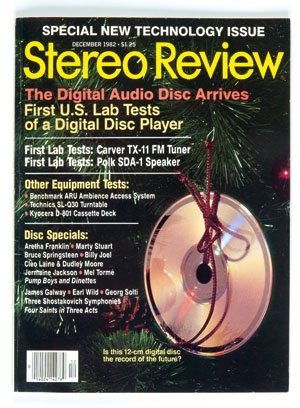50 Greatest A/V Innovations Page 4
| Click here to see a gallery of innovative products. |
19. Satellite/Subwoofer Speaker Systems Another instance in which the earliest examples arrived on the market before 1958 but departed so quickly and quietly as to leave barely a trace. The true commercial beginning for this format was the introduction of the Bose Acoustimass 5 three-piece speaker system in 1989. It had a pair of satellite speakers - each comprising a joined pair of small, single-driver cubes - supported by a common bass module. Similar designs proliferated in its wake, and the concept eventually proved crucial to the popularity of surround sound, with its requirement for 4 or 5 audio channels. That was a lot easier to accommodate with an array of small satellites and a subwoofer than with multiple full-range speakers.
20. Home Networks Although home networks originated as a means of sharing broadband Internet connections and personal information, data is data. Digital audio and video can travel over the same connections, and increasingly, they do. Home networking is making multiroom A/V a reasonable proposition for more people than ever before.
21. Multizone A/V Systems that could distribute audio throughout a house, though rare in those days, have been around since the '50s, but normally it was the same sound everywhere. But today, even moderately priced receivers often provide the ability to send different sources to different areas of the home.
22. DVRs As with so many brilliant ideas, the concept behind DVRs (digital video recorders) seems obvious once demonstrated - except, of course, that nobody ever thought of it before. The combination of a big hard drive (to store digital video) and sophisticated software (to manage time-shifting) untethered us from the TV schedule to a degree unthinkable with VCRs. TiVo shipped its first DVRs in 1999.
23. Universal Remote Controls Wireless remote control arrived on the home entertainment scene in the 1950s, but as remotely controllable components proliferated in our systems, so did the handsets. Eventually, juggling all those convenience devices became an inconvenience in its own right. Although the solution was clear - integration - how to achieve it effectively was not so much so. The first remote that could learn commands from others, Steve Wozniak's CORE (1987), was a commercial failure. But over the years, manufacturers figured out how to make truly user-friendly universal remotes, with the result that now almost everybody has one. (Or two or three, but that's another story.)
24. Media Servers Digital audio and video, the rise of home networking and the Internet, and extravagantly capacious hard drives have combined to make discs and tapes (what the industry calls "packaged media") seem increasingly quaint. Audio and video servers can hold the contents of hundreds or even thousands of CDs or DVDs and make it all instantly accessible by way of slick graphical user interfaces (GUIs).
25. Acoustic Research Turntable Introduced in 1961 for $58, the original AR turntable was a fine example of back-to-basics engineering. Of particular note was its damped, sprung-subchassis suspension, which was exceptionally immune to shock and acoustic feedback. Its design was widely emulated for years in audiophile turntables from other companies - most notably the legendary Linn Sondek LP-12. In fact, the AR turntable (and its updated 1983 reissue) was so good that it spawned a cottage industry of refurbishers and modifiers, usually offering tonearm replacement, since that was the original's primary weakness.
26. Game Consoles From the original Nintendo Entertainment System (1985) to today's high-definition PlayStation 3 and Xbox 360, game consoles redefined recreation in the video era, and they've evolved into multitasking home entertainment hubs. Also, PlayStation 2 was crucial to DVD's success, acting as a Trojan horse that had people who'd bought the console just to play some games suddenly finding themselves using it to check out the new movie discs.
27. Projection TV Dismissed by many at the time as a quixotic venture, the Advent Videobeam 1000 (1972) was the world's first big-screen projection TV for the home, built on audio pioneer Henry Kloss's conviction that watching TV should be a theatrical experience. It was the first step on the long road to home theater and HDTV.





























































